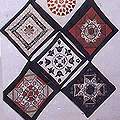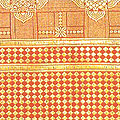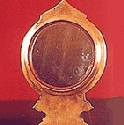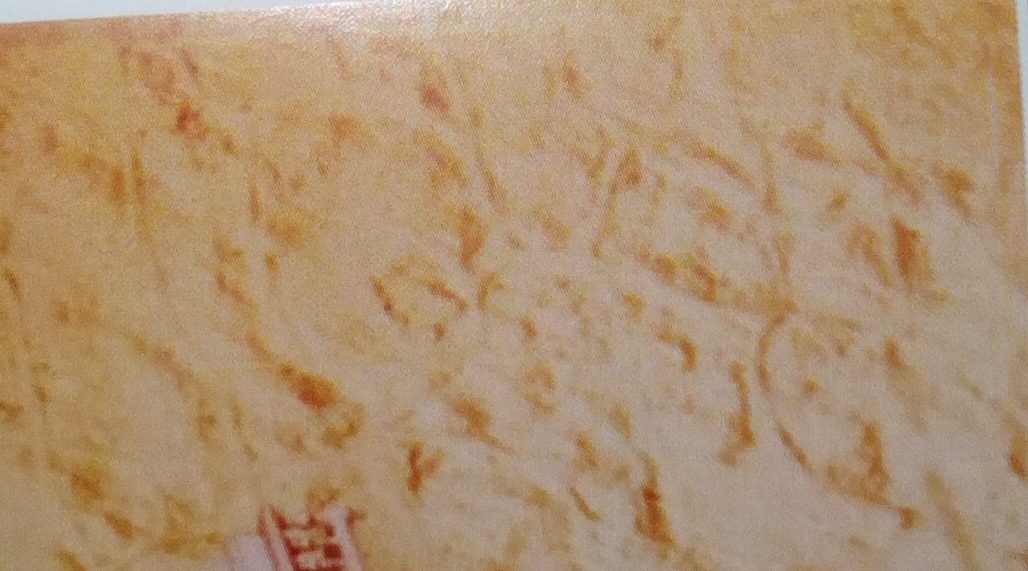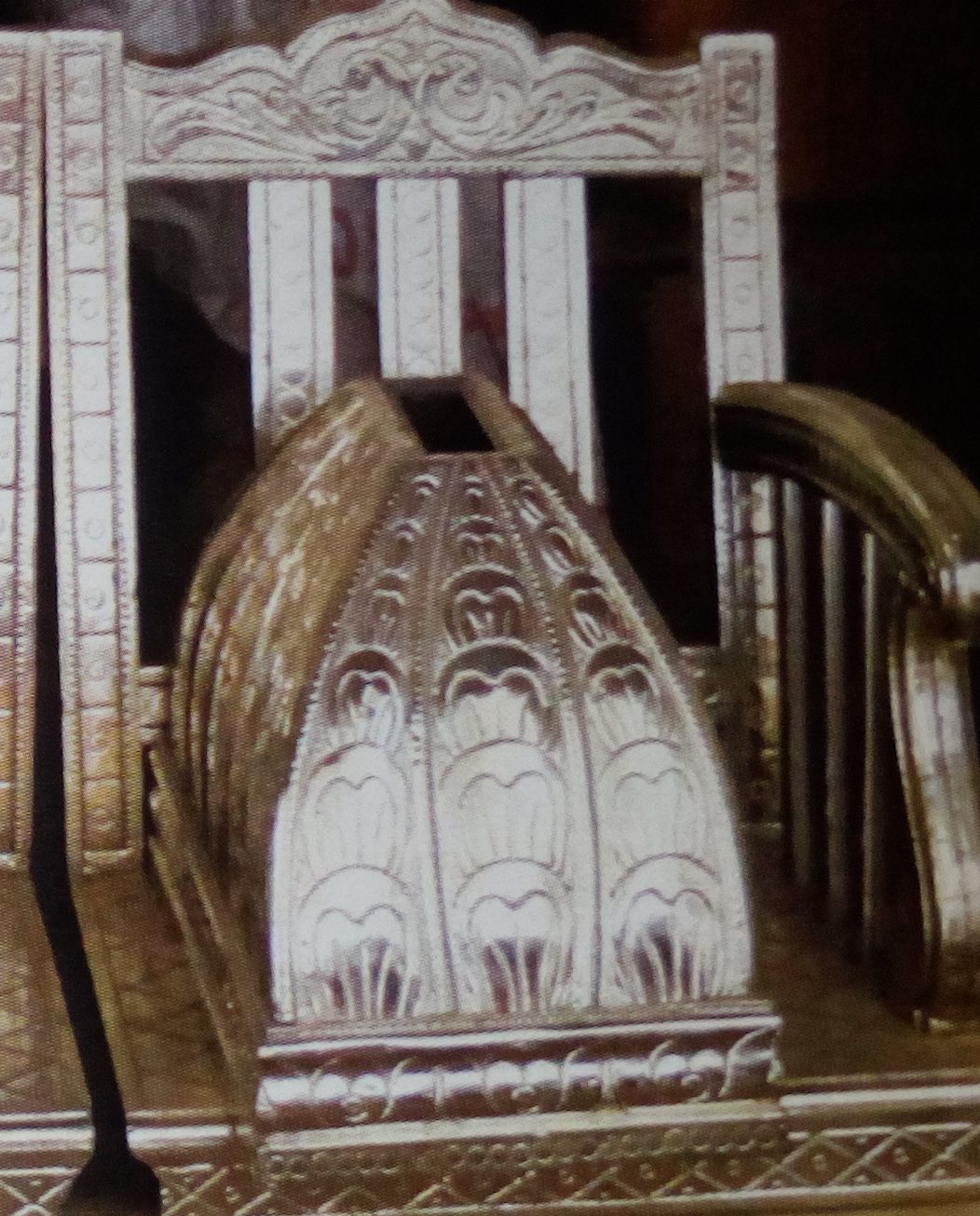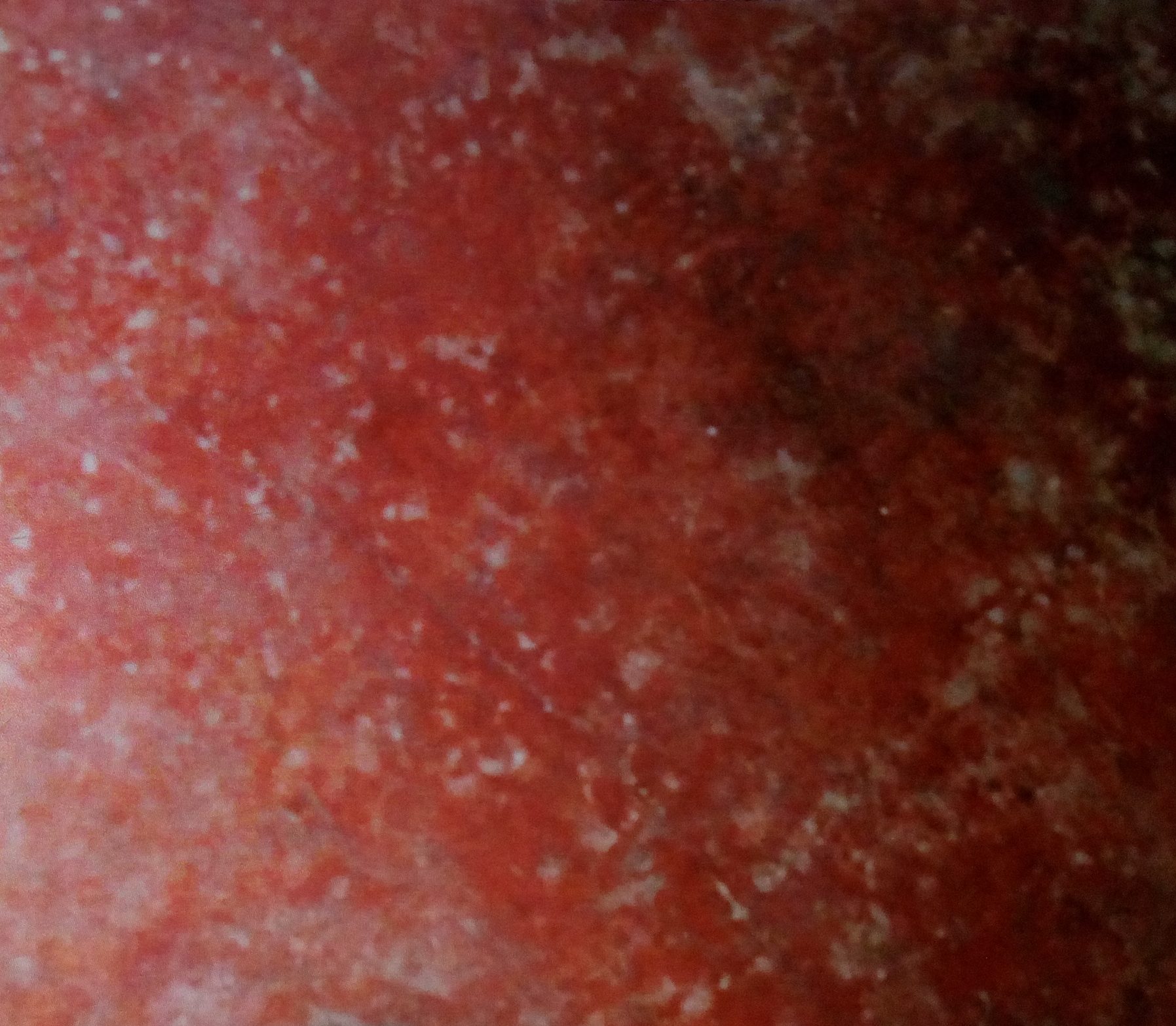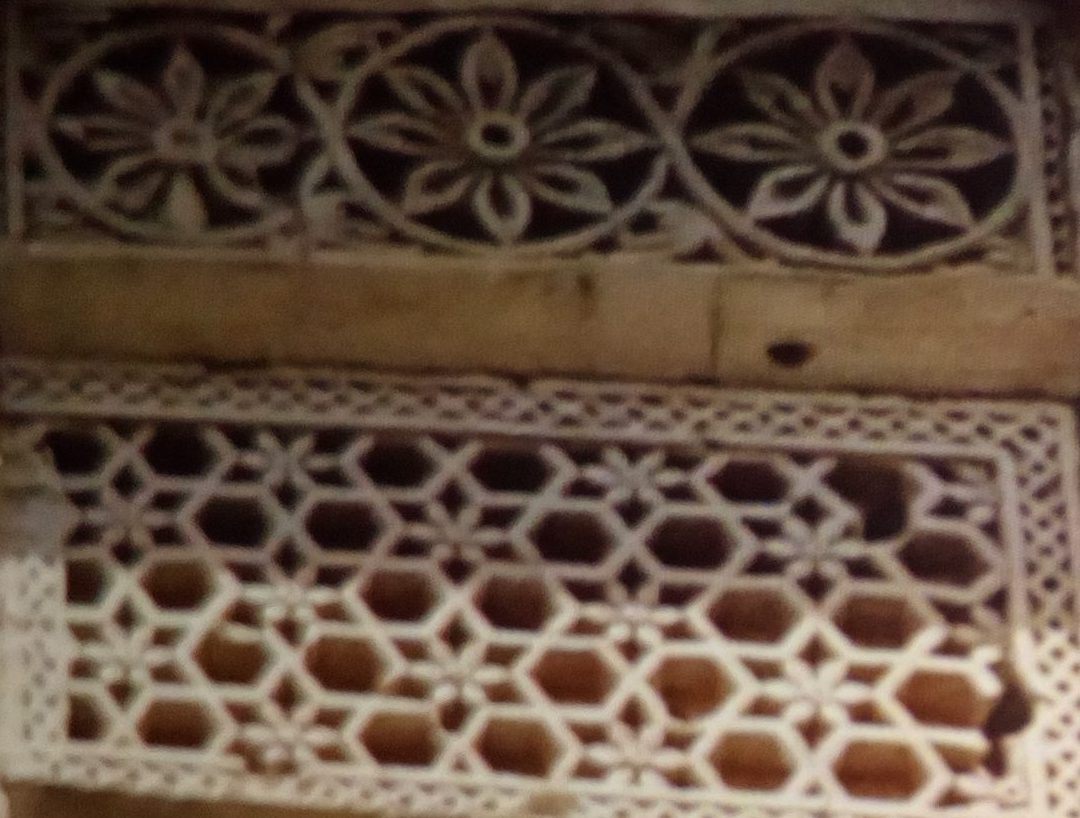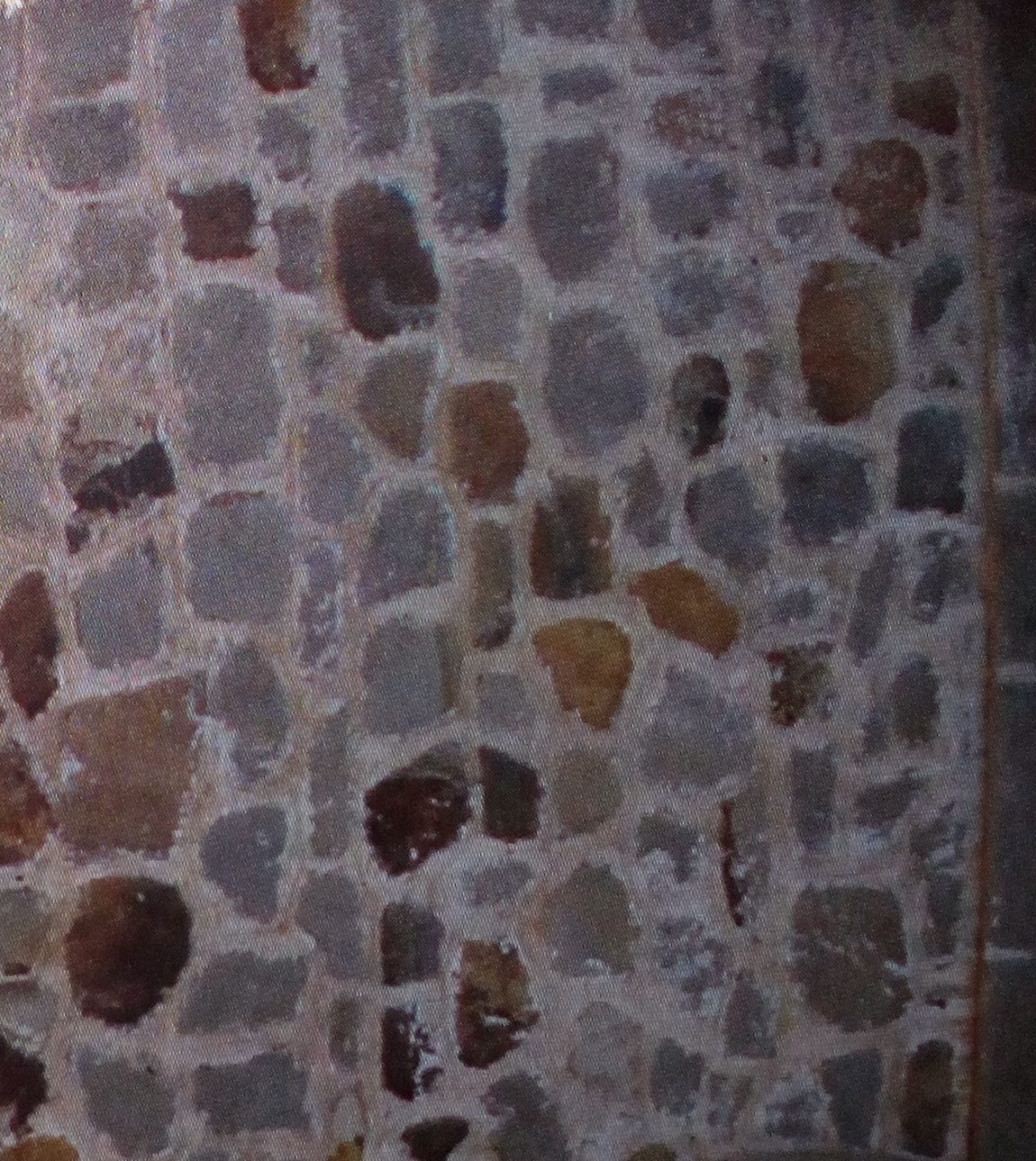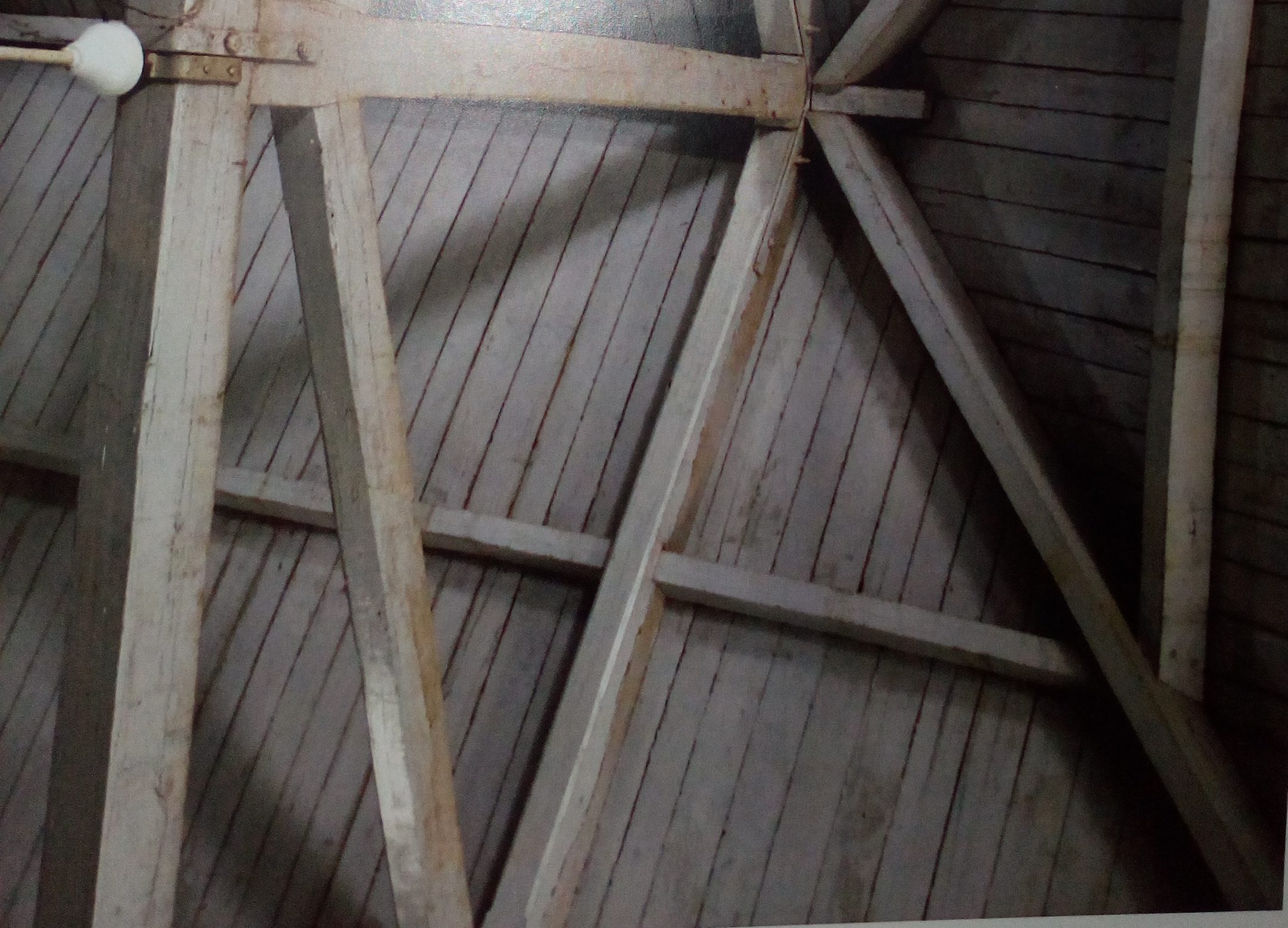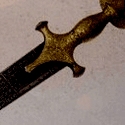Applique, Patchwork, Quilting, Cutwork,
This traditional craft is usually pursued as a leisure-time activity by rural womenfolk working out of their homes. The practice seems to have originated in the household activity of using available scraps of fabric to make a tablecloth or a bedspread. The womenfolk often engaged themselves in stitching pieces into a patchwork design, using a wide range of colour combinations; the product so made was not only utilitarian but also a treasured memento. Gradually, as the craft has developed - due to exposure to trends in foreign countries in related crafts like quilt-making and appliqué work along with patchwork itself- some of these hand-made products have found their way into the market.
This traditional craft is usually pursued as a leisure-time activity by rural womenfolk working out of their homes. The practice seems to have originated in the household activity of using available scraps of fabric to make a tablecloth or a bedspread. The womenfolk often engaged themselves in stitching pieces into a patchwork design, using a wide range of colour combinations; the product so made was not only utilitarian but also a treasured memento. Gradually, as the craft has developed - due to exposure to trends in foreign countries in related crafts like quilt-making and appliqué work along with patchwork itself- some of these hand-made products have found their way into the market.
A CONTEMPORARY PERSPECTIVE
Formal training is imparted to groups of young women in rural areas in the techniques of patchwork, quilting, embroidery, and other related domestic crafts. The patchwork items have a good market outside the country as well as in some commercial establishments found locally.The craftswomen study market preferences; whatever the product, the aim is to make them of a high-quality and also ensure its suitability to various climates. Patchwork quilts are held as prized possessions. Items made using the patchwork technique include cushion-covers, bedspreads, and table settings crafted to harmonise with furniture and accessories.
Arani Silk Sari Weaving of Tamil Nadu,
Arani, one of the most important centres for silk in Tamil Nadu, is located in the Thiruvannamalai district. Here both the ladies and gents produce good quality silk sarees and handloom fabric. Arani handlooms are well known for the durability of the colours used in the yarn. The mixture of colour gives the durability. First the yarn is dyed. For the colour to be permanent, the yarn is then dyed. The starched yarn is bought from the merchants by master weavers and is distributed to weavers, who turn it on the charkha to obtain thread, which is used for weft. Next the yarn is loaded on the looms. The length of yarn which is loaded as warp is known as Pavvu. A weaver can weave four sarees from one pavvu. It will take a week to weave one pavvu of four sarees. The softness and the hardness of the fabric depend on the count used in weaving. The count in a handloom fabric refers to the number of threads woven length wise (warp) and breadth wise (weft) a square inch. The count in the saree is 2400 which provides strength to the fabric and durability. Mostly Frame looms are used in Arani Silk Saree weaving. In a frame loom, the loom will be fixed in a frame. For creating designs, a computerised design is punched into thick cards which are loaded into the Jacqard in the loom, so that the needles will pull and put the threads according to the holes to create the design. Jacqard is a box like structure at the top of the loom which contains needles which will read the designs on the punch card. The Arani handlooms are famous for their softness and durability. The fabrics are soft and comfortable and suitable for all climates. Originally only silk sarees were manufactured on Arani looms but now other products like dress materials are also woven on it. The skill of weaving is passed on from generation to generation traditionally, by way of vision and practice. On cannot learn the craft theoretically or from institutes. However the craft is dwindling due to the low wages and traditional weavers opting out of this industry. The speciality of an Arani silk saree is that one can find two different bodies and pallus on each side, hence it can be used as two different sarees. Arani Sarees and fabric are available in most of the textile shops in Chennai.
Arani, one of the most important centres for silk in Tamil Nadu, is located in the Thiruvannamalai district. Here both the ladies and gents produce good quality silk sarees and handloom fabric. Arani handlooms are well known for the durability of the colours used in the yarn. The mixture of colour gives the durability. First the yarn is dyed. For the colour to be permanent, the yarn is then dyed. The starched yarn is bought from the merchants by master weavers and is distributed to weavers, who turn it on the charkha to obtain thread, which is used for weft. Next the yarn is loaded on the looms. The length of yarn which is loaded as warp is known as Pavvu. A weaver can weave four sarees from one pavvu. It will take a week to weave one pavvu of four sarees. The softness and the hardness of the fabric depend on the count used in weaving. The count in a handloom fabric refers to the number of threads woven length wise (warp) and breadth wise (weft) a square inch. The count in the saree is 2400 which provides strength to the fabric and durability. Mostly Frame looms are used in Arani Silk Saree weaving. In a frame loom, the loom will be fixed in a frame. For creating designs, a computerised design is punched into thick cards which are loaded into the Jacqard in the loom, so that the needles will pull and put the threads according to the holes to create the design. Jacqard is a box like structure at the top of the loom which contains needles which will read the designs on the punch card. The Arani handlooms are famous for their softness and durability. The fabrics are soft and comfortable and suitable for all climates. Originally only silk sarees were manufactured on Arani looms but now other products like dress materials are also woven on it. The skill of weaving is passed on from generation to generation traditionally, by way of vision and practice. On cannot learn the craft theoretically or from institutes. However the craft is dwindling due to the low wages and traditional weavers opting out of this industry. The speciality of an Arani silk saree is that one can find two different bodies and pallus on each side, hence it can be used as two different sarees. Arani Sarees and fabric are available in most of the textile shops in Chennai.
Aranmula Kannadi Metal Mirror of Kerala,
An unusual and unique product, this metal mirror, a product of Aranmula in the district of Pathanamthitta near Chengannur in Kerala, is made out of an alloy of copper and tin. The polished face of the vaalkannadi or hand held mirrors with cast bronze frames metal not only resembles glass but also has the same ability to reflect images clearly. This product is crafted by unique metal artisans who retain, till today, the secret art of obtaining a mirror-like reflection out of the metal. This reflection formed in the Aranmula kannadi does not undergo any refraction unlike image produced in common mercury-coated glass mirrors. Mud from the local paddy fields is used to make the mould. To cast the mirror the technique followed is the ciré-perdue or lost wax method of casting. The tools used are basic and range from Iron tongs, Files, Hammers, Chisels and fine emery paper. The metal mirror is then given a coating of metallic powder mixed with special oil. The artisan then laboriously rubs the metal with a hessian cloth or soft velvet fabric over several days. Due to the arduous labour required in the casting process, a craftsman may make a maximum of 20 mirrors during a month. The artisans are said to have stumbled on this technique while they were making a crown for their deity. The temple chief was so delighted with this mirror that he included it among the eight auspicious items used in worship in the temple and the deity has ever since been known as the 'idol of the mirror'. Generations of this family of highly specialized goldsmiths have been using the lost wax process to cast these metal kannadi mirrors since then. The mirrors were used by royalty and in rituals related to the temple. Due to high cost the traditional bronze cast frame has been replaced with brass frames with stands. The products produced include the traditional Cheppukannadi - box mirror, the Kunkumacheppur-mirror attached to a vermillion container, Vaal kannadi - mirror with a handle and differently sized and shaped mirrors, usually with stands.
An unusual and unique product, this metal mirror, a product of Aranmula in the district of Pathanamthitta near Chengannur in Kerala, is made out of an alloy of copper and tin. The polished face of the vaalkannadi or hand held mirrors with cast bronze frames metal not only resembles glass but also has the same ability to reflect images clearly. This product is crafted by unique metal artisans who retain, till today, the secret art of obtaining a mirror-like reflection out of the metal. This reflection formed in the Aranmula kannadi does not undergo any refraction unlike image produced in common mercury-coated glass mirrors. Mud from the local paddy fields is used to make the mould. To cast the mirror the technique followed is the ciré-perdue or lost wax method of casting. The tools used are basic and range from Iron tongs, Files, Hammers, Chisels and fine emery paper. The metal mirror is then given a coating of metallic powder mixed with special oil. The artisan then laboriously rubs the metal with a hessian cloth or soft velvet fabric over several days. Due to the arduous labour required in the casting process, a craftsman may make a maximum of 20 mirrors during a month. The artisans are said to have stumbled on this technique while they were making a crown for their deity. The temple chief was so delighted with this mirror that he included it among the eight auspicious items used in worship in the temple and the deity has ever since been known as the 'idol of the mirror'. Generations of this family of highly specialized goldsmiths have been using the lost wax process to cast these metal kannadi mirrors since then. The mirrors were used by royalty and in rituals related to the temple. Due to high cost the traditional bronze cast frame has been replaced with brass frames with stands. The products produced include the traditional Cheppukannadi - box mirror, the Kunkumacheppur-mirror attached to a vermillion container, Vaal kannadi - mirror with a handle and differently sized and shaped mirrors, usually with stands.
Architecture Adobe Bricks of Saurashtra, Gujarat,
Gujarat has a long history of using earthen materials to build dwelling spaces. Following traditional values, there are mainly four types of materials used to make houses of Gujarati people. They are cob, adobe, wattle and daub. Adobe construction and its variants with unburnt bricks are widely used. Adobe, which was very similar to stone construction was traditionally practised in areas where there was a scarcity of construction materials and water sources. Traditionally, adobe blocks were used for construction in Kutch. Today their usage is widespread, especially in the city of Saurashtra.
Gujarat has a long history of using earthen materials to build dwelling spaces. Following traditional values, there are mainly four types of materials used to make houses of Gujarati people. They are cob, adobe, wattle and daub. Adobe construction and its variants with unburnt bricks are widely used. Adobe, which was very similar to stone construction was traditionally practised in areas where there was a scarcity of construction materials and water sources. Traditionally, adobe blocks were used for construction in Kutch. Today their usage is widespread, especially in the city of Saurashtra.
Architecture Lime and Sand Stone Carving of Saurashtra, Gujarat,
Saurashtra was one of the first places in Gujarat, where temple building and stone architecture started. Temples, house ceilings, hangings from the wall, etc. all elements were once made only with stone. One of these structures is a stepwell, which was traditionally made by masons. Stepwells are designed to offer more than water. While the tiered structure provides shelter from the hot and dry weather, the structure, usually made of brick and sandstone and lime mortar, keep the surroundings cool.
Saurashtra was one of the first places in Gujarat, where temple building and stone architecture started. Temples, house ceilings, hangings from the wall, etc. all elements were once made only with stone. One of these structures is a stepwell, which was traditionally made by masons. Stepwells are designed to offer more than water. While the tiered structure provides shelter from the hot and dry weather, the structure, usually made of brick and sandstone and lime mortar, keep the surroundings cool.
Architecture Metal Embossing of Saurashtra, Gujarat,
The craft community of Gujarat has been involved in taming metal and using its malleability to their advantage. Metal or 'dhatu' is crafted by both metalsmith and masons in different stages of metal production. Different techniques have been mastered to perfect the work in metal and yield a range of quality goods. The wires and sheets of these metals have been used to create monumental material objects such as temples. Household items of daily are also produced with a mix of metallic and stonework such as in furniture. Besides these architectural inventions, metallic wires are also produced to adorn garments. Embossing metal with wood, stone and other raw materials have developed into fine art for every stratum of the society. [gallery ids="176650,176649"]
The craft community of Gujarat has been involved in taming metal and using its malleability to their advantage. Metal or 'dhatu' is crafted by both metalsmith and masons in different stages of metal production. Different techniques have been mastered to perfect the work in metal and yield a range of quality goods. The wires and sheets of these metals have been used to create monumental material objects such as temples. Household items of daily are also produced with a mix of metallic and stonework such as in furniture. Besides these architectural inventions, metallic wires are also produced to adorn garments. Embossing metal with wood, stone and other raw materials have developed into fine art for every stratum of the society. [gallery ids="176650,176649"]

Architecture Mosaic Flooring and Tiles of Saurashtra, Gujarat,
Gujarat is famously known for its vivid traditional architecture and the craftspeople who keep it alive. In modern times, a new craft has started breeding in the streets of Gujarat owing o the hight demand in the market. These are mosaic tiles which are also used in crafting floors in many households. Mosaic is an art form which uses small pieces of coloure stones such as tiles, glass or stones to render an artistic design. Mosaic flooring in Saurashtra consists of geometic designs and sometimes repeating patterns making it appear like a modern art.
Gujarat is famously known for its vivid traditional architecture and the craftspeople who keep it alive. In modern times, a new craft has started breeding in the streets of Gujarat owing o the hight demand in the market. These are mosaic tiles which are also used in crafting floors in many households. Mosaic is an art form which uses small pieces of coloure stones such as tiles, glass or stones to render an artistic design. Mosaic flooring in Saurashtra consists of geometic designs and sometimes repeating patterns making it appear like a modern art.
Architecture Oxide Flooring of Saurashtra, Gujarat,
Oxide as both raw material and a catalytic agent has contributed significantly to the ornamentation of the modern architecture in states like Gujarat and Kerala. It has become one of the top choices for furnishing the built surfaces in architectural spaces. Its earthy and warm texture gives a finished yet rugged look. It is also used as an agent in the preparation of floors, walls and other surfaces typically in shades such as cherry, crimson, ruby or scarlet. This [practice has been polished and perfected owing to its dight demand in Saurashtra, Gujarat.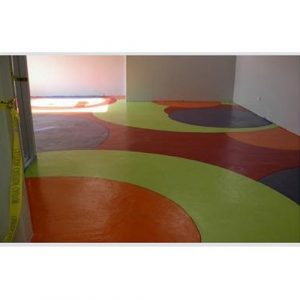
Oxide as both raw material and a catalytic agent has contributed significantly to the ornamentation of the modern architecture in states like Gujarat and Kerala. It has become one of the top choices for furnishing the built surfaces in architectural spaces. Its earthy and warm texture gives a finished yet rugged look. It is also used as an agent in the preparation of floors, walls and other surfaces typically in shades such as cherry, crimson, ruby or scarlet. This [practice has been polished and perfected owing to its dight demand in Saurashtra, Gujarat.

Architecture Stone Carving of Saurashtra, Gujarat,
Stonework in Gujarat follows both classical (based on the ShilpaShastras)and the local traditions. The classical is seen in the large scale constructions which has often bene patronized by the chieftains, rulers and the royal families. Local shrines and funerary structures exhibit the spontaneity of evolved traditions.
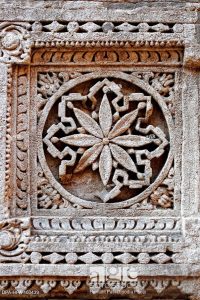

Stonework in Gujarat follows both classical (based on the ShilpaShastras)and the local traditions. The classical is seen in the large scale constructions which has often bene patronized by the chieftains, rulers and the royal families. Local shrines and funerary structures exhibit the spontaneity of evolved traditions.



Architecture Stone Jali/ Lattice Work Saurashtra, Gujarat,
Gujarat is a hub of craftspersons who are proficient in masonry and stone carving. Jharukhas or stone brackets, stone screens structures have made Gujarat famous for its sand and stone art. One of the most intricate forms of stone carving is the jaali or the fretwork. In the jaali technique, the stone or the lattices screen is perforated in ornamental patterns through the use of calligraphy and geometry. Jali work is beneficial to maintain proper airflow and keep the temperature at a suitable level for warms days in Gujarat.
Gujarat is a hub of craftspersons who are proficient in masonry and stone carving. Jharukhas or stone brackets, stone screens structures have made Gujarat famous for its sand and stone art. One of the most intricate forms of stone carving is the jaali or the fretwork. In the jaali technique, the stone or the lattices screen is perforated in ornamental patterns through the use of calligraphy and geometry. Jali work is beneficial to maintain proper airflow and keep the temperature at a suitable level for warms days in Gujarat.
Architecture Stone Masonry of Saurashtra, Gujarat,
The earliest of the stonecraft in Gujarat can be dated back to almost 400 years ago. It has been a primary source of construction for many regions in Gujarat. The stones of Gujarat such as basalt, granite, limestone, sandstone and marble can be seen with its crafted elements and a wide variety of sculptures. Stonecraft has made huge contributions in the state's architectural heritage, artefacts and everyday objects.
The earliest of the stonecraft in Gujarat can be dated back to almost 400 years ago. It has been a primary source of construction for many regions in Gujarat. The stones of Gujarat such as basalt, granite, limestone, sandstone and marble can be seen with its crafted elements and a wide variety of sculptures. Stonecraft has made huge contributions in the state's architectural heritage, artefacts and everyday objects.
Architecture Structural Woodwork of Saurashtra, Gujarat,
In many places, dwelling places and houses in Gujarat follow the traditional wood craftwork. The systemic architectural layout of these houses have columns, brackets, balconies, ceilings, furniture, everything made from wood. The front side of the houses are beautifully architectured with intricate carving. Crafting an aesthetically pleasing front is a cultural tradition that has been followed in Gujarat. All elements which are made from wood and crafted with perfection. For example, a 'jharukho' i.e a balcony is a sensitive structure. To create a sturdy structure minimal overhanging window seats are constructed. Railings and roofs are made of thick wooden or wood-like planks to hold the entire structure together. [gallery ids="175810,176651,176652,176653,176654"]
In many places, dwelling places and houses in Gujarat follow the traditional wood craftwork. The systemic architectural layout of these houses have columns, brackets, balconies, ceilings, furniture, everything made from wood. The front side of the houses are beautifully architectured with intricate carving. Crafting an aesthetically pleasing front is a cultural tradition that has been followed in Gujarat. All elements which are made from wood and crafted with perfection. For example, a 'jharukho' i.e a balcony is a sensitive structure. To create a sturdy structure minimal overhanging window seats are constructed. Railings and roofs are made of thick wooden or wood-like planks to hold the entire structure together. [gallery ids="175810,176651,176652,176653,176654"]
Architecture Wood Carving of Saurashtra, Gujarat,
Wood has been fashioned in many ways to produce a large range of crafts in Gujarat. Architectural elements, furniture, blocks for textile printing have been the most common use of woodcraft in Gujarat. Most traditional brackets called Jharukhos, which are sometimes also built in stone, have intricate work of wood carving. There are symbolic overtones in the carving of different wooden elements. Both floral and geometrical motifs are used on various elements of the wooden pillars, ceilings, etc. The use of wood is minimal in contemporary architecture in Gujarat. Traditional households, however, still share a deep interest in the wooden elements.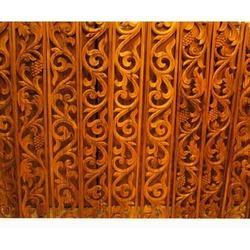
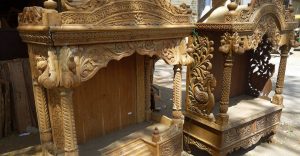


Wood has been fashioned in many ways to produce a large range of crafts in Gujarat. Architectural elements, furniture, blocks for textile printing have been the most common use of woodcraft in Gujarat. Most traditional brackets called Jharukhos, which are sometimes also built in stone, have intricate work of wood carving. There are symbolic overtones in the carving of different wooden elements. Both floral and geometrical motifs are used on various elements of the wooden pillars, ceilings, etc. The use of wood is minimal in contemporary architecture in Gujarat. Traditional households, however, still share a deep interest in the wooden elements.




Architecture Wrought Iron of Saurashtra, Gujarat,
A modern phenomenon, wrought ironwork is practised widely in Gujarat. Products such as trays, table accessories, tables, beds, pen stands, baskets, lamp stands, chairs, plate stands, photo frames, table accessories, garden furniture etc are created under this craft-form. Tools such as blower, hammer, grinding machine and welding torch are used for crafting purposes. Wrought iron is a very low carbon metal made by intensive handwork ns using small scale production methods.
A modern phenomenon, wrought ironwork is practised widely in Gujarat. Products such as trays, table accessories, tables, beds, pen stands, baskets, lamp stands, chairs, plate stands, photo frames, table accessories, garden furniture etc are created under this craft-form. Tools such as blower, hammer, grinding machine and welding torch are used for crafting purposes. Wrought iron is a very low carbon metal made by intensive handwork ns using small scale production methods.
Ari Work of Kashmir,
Widely practiced throughout India, Ari work is executed using a hooked needle, Ari, which is placed under the fabric and is used to pull a chain of loops, each rising from the previous in continuous succession. Products created through ari work are stoles, shawls, pheran, kurta, capes.
Widely practiced throughout India, Ari work is executed using a hooked needle, Ari, which is placed under the fabric and is used to pull a chain of loops, each rising from the previous in continuous succession. Products created through ari work are stoles, shawls, pheran, kurta, capes.
Arms, Armour and Weaponry of Rajasthan,
Jaipur, Udaipur, and Sirohi are the main centres for making swords and shields which are essential for rituals; the weapons are made by damascening. In the technique of damascening, the design is first chased on the iron or steel surface with a sharp chisel. Gold or silver wire held in one hand within the groove is hammered in with the other hand. The hammering is done so skilfully that the wire is actually welded to the metal surface.
Jaipur, Udaipur, and Sirohi are the main centres for making swords and shields which are essential for rituals; the weapons are made by damascening. In the technique of damascening, the design is first chased on the iron or steel surface with a sharp chisel. Gold or silver wire held in one hand within the groove is hammered in with the other hand. The hammering is done so skilfully that the wire is actually welded to the metal surface.
Artificial Flowers and Foliage,
This non-traditional craft has acquired a lot of attention as an effort on the part of the government to finding new avenues of employment for the unemployed. The challenge is to use common - often waste - materials and transform them into artistic and marketable wares. Foreign expertise and training is also been aspect of these non-traditional crafts; Japanese influence is visible in artificial flower making. A minor craft, this has become very popular in recent times due to its attractiveness and myriad uses. This is a non-traditional craft practised dominantly by women. The knowledge-base for this family-based craft, craft has been acquired mainly from foreign expertise or from local instructors.
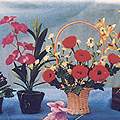

This non-traditional craft has acquired a lot of attention as an effort on the part of the government to finding new avenues of employment for the unemployed. The challenge is to use common - often waste - materials and transform them into artistic and marketable wares. Foreign expertise and training is also been aspect of these non-traditional crafts; Japanese influence is visible in artificial flower making. A minor craft, this has become very popular in recent times due to its attractiveness and myriad uses. This is a non-traditional craft practised dominantly by women. The knowledge-base for this family-based craft, craft has been acquired mainly from foreign expertise or from local instructors.
CRAFT PRODUCTS
The range of flowers include roses, chrysanthemums, anthuriums, and the like. Natural-looking leaves are also made; these are often used to decorate flower pots. A wide array of products like wax flowers in poplin, velvet, stockinette, and multi-coloured sprigs, branches, creepers, and festoons of foliage are being made. The materials normally used for this craft are crepe paper, painted paper, or stiff cloth. Another category in these artificial flowers is the dip-in-liquid flower range. These flowers require a special liquid for dipping the separately turned out petals and leaves. This method gives a glass-like appearance to the flowers, thus enhancing its beauty in the floral décor.

INTERVENTIONS
Of late there has been increased interest in artificial flowers from the tourists; efforts are underway to make the flowers and foliage look as natural as possible. A lot of training programmes have been organised by the government. Young girls are taught the art of making artificial flowers and plants at training centres in Mirigama and Ratnapura, run by the Sri Lanka Handicrafts Board. Raw materials such as silk are supplied by these centres.
This craft can be expanded to a great extent as new materials, designs, and ideas are introduced. A lot of artificial flowers and plants in plastic have been imported into the country from Hong Kong, Taiwan, and Singapore; in response to this challenge, local craftspeople have been making efforts to improve the quality of their products. A lot of inputs have gone into producing better designs in eye-catching colours.

MARKETS
Artistic and talented women thus find an opportunity to earn a substantial income as these artificial flowers and foliage. Crafts like these can help rural women to a great extent as a self-employment opportunity which are a means of alleviating their poverty. In addition to local and overseas demands, these artificial flowers and plants are in great demand by the hospitality industry. Tastefully designed and dainty floral arrangements have come to form an integral part of contemporary interior décor. The demand for such products go up significantly in the festival season.
Azulejos/ Handpainted Tiles of Goa,
The use of glazed, painted tiles called “Azulejos”, can be seen across old churches and homes in Goa. Azulejos was introduced in Portugal through Arab influence in the 8th century and the word 'Azulejos' is derived from Arabic meaning both smooth and blue. These tiles were introduced in Goa during Portugese times and the production of these painted tiles continue today using both traditional and modern techniques. Blue and yellow were the favored color combinations for the tiles which depicted mainly floral patterns and religious scenes though now all colours and several new themes are painted. White tiles are painted in differing color shades and fired in an oven to fuse the color pigments permanently with the tile. Such tiles are used to decorate the entrance walls. The old tiles can be seen at the Menezes Braganza hall in Panjim painted by Jorge Colaco, in the Old Goa church in Chinchinim in South Goa and in the several other places. The process followed is that the clay tile base is first prepared, it is then fired at 1200o centigrade temperature. It is then glazed and painted on with ceramic colors and fired again at 1200oc to fuse the color pigments with the tile.
The use of glazed, painted tiles called “Azulejos”, can be seen across old churches and homes in Goa. Azulejos was introduced in Portugal through Arab influence in the 8th century and the word 'Azulejos' is derived from Arabic meaning both smooth and blue. These tiles were introduced in Goa during Portugese times and the production of these painted tiles continue today using both traditional and modern techniques. Blue and yellow were the favored color combinations for the tiles which depicted mainly floral patterns and religious scenes though now all colours and several new themes are painted. White tiles are painted in differing color shades and fired in an oven to fuse the color pigments permanently with the tile. Such tiles are used to decorate the entrance walls. The old tiles can be seen at the Menezes Braganza hall in Panjim painted by Jorge Colaco, in the Old Goa church in Chinchinim in South Goa and in the several other places. The process followed is that the clay tile base is first prepared, it is then fired at 1200o centigrade temperature. It is then glazed and painted on with ceramic colors and fired again at 1200oc to fuse the color pigments with the tile.
Bahi Khata/Clothbound Books of Rajasthan,
Traditionally created for the purpose of accounting, Bhai are handbound books with yellow and white pages with hand-quilted cover. Production clusters center around Chauda Rasta in Jaipur and Udaipur. Tools such as cardboard, fabric, cotton twine, large eyed needle and sewing machine are used for the crafting process.
Traditionally created for the purpose of accounting, Bhai are handbound books with yellow and white pages with hand-quilted cover. Production clusters center around Chauda Rasta in Jaipur and Udaipur. Tools such as cardboard, fabric, cotton twine, large eyed needle and sewing machine are used for the crafting process.
